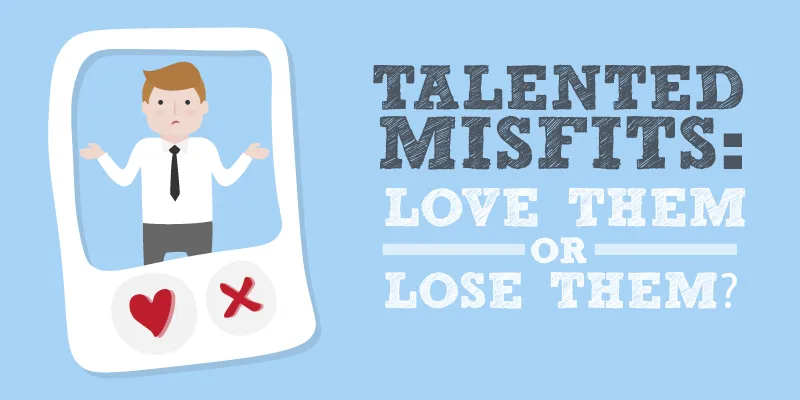Talented misfits: love them or lose them?
Startups are more than just business platforms, especially the ones that have sprung up in the last five years or so. Founders and co-founders are becoming increasingly conscious of how they are perceived. It’s little wonder that startups are leading the bandwagon when it comes to leveraging the social media impetus to showcase their lighter side. Be it with birthday celebrations, impromptu parties, fun picnics and more, all non-work related activities have found their own niche on the Internet.

Most startup founders are betting their bottom dollar on developing a unique culture – one that reflects their personal choices in everything they do, from the way a client is received to how an email is sent. So whom do you turn to in order to create such a cosmopolitan, cool and efficient culture? The employees, of course! It’s the employees who create what you wish to project as your company’s culture. Small wonder, then, that it is they who can malign it too.
So what do you do when a hard-working and talented employee fails to pass the culture test? It’s a tough problem and one that’s likely to bother you for a while. The solution, though not an easy one, seems to be the only choice you may have. We call it the three-month plan. What it entails is exercising one simple rule – whenever you feel that an otherwise efficient employee is unable to merge with the company’s culture, give yourself three months before making a decision. It’s a difficult choice but certainly not as difficult as finding the right hire.
Hiring is one of the most important decisions that startups make. A friend of mine, who works as the Design Lead in Decathlon, Gurgaon, had this to say about hiring , “So far, I must have seen 400 resumes, conducted 200 interviews, got about 50 to enter the second round, 10 to meet senior management. Only then did I find the one I wanted to hire.” The whole process took him two months. But startups do not have that liberty. Therefore, firing an employee solely based on their inability to fit into your work culture can be a premature decision.
“‘Cultural Fit’ is only a valid hiring criteria if you can accurately define your culture.” - Chris Yeh, Co-founder of Wasabi Ventures Academy
Startups that have managed to create history have one thing in common: they always know their priorities. So if hiring comes in at number three for you, after say, getting investors and a client or two on board, make sure you spend the third, or the hiring phase of your company, with due diligence. Define your company’s culture in clear terms. Write them down. Put them on the website. Be honest in conveying what the employee can expect once they become a part of your team. If too many late nights are expected, tell them so. If there are likely to be times when they might have to miss family functions, tell them so. It might not sound appealing now, but once you use transparency as a ground rule during interviews, you’ll get the right kind of employee to highlight your company's culture.
But we live in a far from ideal world. There are chances that, even after your honest display of expectations, a fine employee could grow intolerant of the culture, thus hampering the progress of your company. This is when the three-month plan will come in handy. Make sure that the employee in question knows it too. Give him/her a fair chance to turn around, and if they don’t, blame your luck and wait for a culturally fit one to make a surprise appearance.
Again same problem as your other piece. Why should a reader care about your friend and what he/she has to say? It is better to take their name and give their post. Say so and so, design head, Decathlon says.
(Disclaimer: The views and opinions expressed in this article are those of the author and do not necessarily reflect the views of YourStory.)







